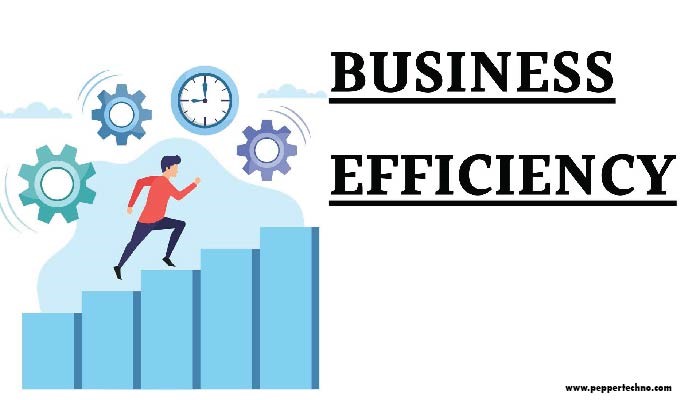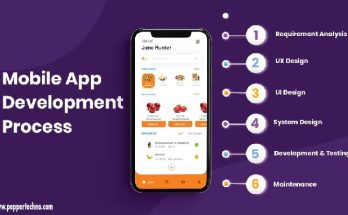Strategies for Improving Business Efficiency: Unlocking Growth and Sustainability
Here you will see the process of Improving Business Efficiency in detail. In today’s fast-paced and competitive business landscape, efficiency is paramount for success. Whether you’re a startup or a seasoned corporation, maximizing efficiency can significantly impact your bottom line, productivity, and overall success. This article explores various strategies and approaches to improving business efficiency, covering everything from streamlined processes to leveraging technology and fostering a culture of continuous improvement.

Understanding Business Efficiency
Before diving into specific strategies, it’s essential to understand what business efficiency entails. Simply put, efficiency refers to accomplishing tasks and goals with the least amount of time, effort, and resources while maintaining quality standards. It’s about optimizing processes, eliminating waste, and maximizing output. Improved efficiency leads to increased productivity, reduced costs, enhanced customer satisfaction, and a competitive edge in the market.
Assessing Current Processes
The first step in improving efficiency is to assess your current processes comprehensively. Conduct a thorough analysis of each aspect of your business operations, including production, sales, marketing, finance, and customer service. Identify bottlenecks, redundancies, and areas of inefficiency. This evaluation provides valuable insights into where improvements are needed and serves as a foundation for implementing targeted strategies.
Implementing Lean Principles
Lean principles, derived from the Toyota Production System, emphasize minimizing waste and maximizing value in every aspect of business operations. Adopting lean methodologies involves identifying and eliminating eight types of waste: overproduction, waiting, transportation, overprocessing, excess inventory, motion, defects, and underutilized talent. By implementing lean principles, businesses can streamline processes, reduce costs, and enhance overall efficiency.
Automating Repetitive Tasks
Automation is a powerful tool for improving efficiency, particularly for repetitive and time-consuming tasks. Leveraging technology to automate processes such as data entry, report generation, and inventory management can significantly increase productivity and accuracy while freeing up valuable time for employees to focus on higher-value activities. Additionally, automation reduces the risk of human error and enables real-time monitoring and analysis of key performance metrics.
Embracing Technology Solutions
In today’s digital age, there is a myriad of technology solutions available to streamline business operations and improve efficiency. From project management software and CRM systems to cloud-based collaboration tools and workflow automation platforms, businesses can leverage technology to optimize processes, enhance communication, and facilitate seamless collaboration among teams. Investing in the right technology solutions tailored to your specific needs can yield significant returns in terms of efficiency gains and competitive advantage.
Prioritizing Employee Training and Development
Employees are the backbone of any organization, and their skills, knowledge, and capabilities directly impact business efficiency. Investing in ongoing training and development programs not only enhances employee performance but also equips them with the tools and skills needed to contribute effectively to process improvement initiatives. By fostering a culture of continuous learning and development, businesses can empower employees to innovate, adapt to change, and drive efficiency improvements across the organization.
Encouraging Collaboration and Communication
Effective collaboration and communication are essential for improving business efficiency, especially in today’s increasingly interconnected and globalized business environment. Encourage cross-functional collaboration among teams, departments, and stakeholders to break down silos, share insights, and leverage collective expertise. Utilize collaboration tools and platforms to facilitate communication, project management, and information sharing, regardless of geographical location or time zone. By fostering a culture of collaboration and open communication, businesses can streamline processes, accelerate decision-making, and drive innovation.
Implementing Agile Methodologies
Implementing Agile methodologies involves embracing a flexible, iterative approach to project management and development. Unlike traditional waterfall methods, Agile focuses on delivering value incrementally through short, iterative cycles known as sprints. Teams work collaboratively, adapting to changing requirements and feedback throughout the development process. Key principles of Agile include customer collaboration, responding to change, and delivering working solutions quickly.
By breaking down complex projects into manageable tasks and prioritizing them based on value and customer needs, Agile enables teams to deliver high-quality products more efficiently. Regular reviews and retrospectives foster continuous improvement, allowing teams to refine processes, address challenges, and optimize outcomes. Embracing Agile methodologies empowers teams to respond quickly to market dynamics, customer feedback, and emerging opportunities, ultimately driving innovation and competitive advantage in today’s rapidly evolving business landscape.



